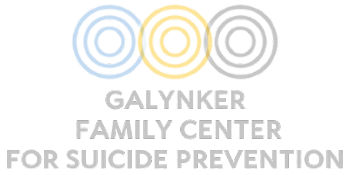
If someone close to you dies by suicide, it’s normal and natural to wonder if there were any signs or hints you missed, and if there was anything more you could have done for the person. Part of the difficulty in helping someone who is thinking about suicide is that most of the time, they don’t share those particular thoughts with anyone–not with their parents, not with their therapist, and not with their spouse or closest friends. It’s extremely unlikely for someone to announce that they are thinking about suicide. That means it’s imperative for there to be another way for either loved ones or therapists to glean whether someone is struggling with suicidal thoughts. There has to be an effective method for screening for suicide crisis.
Why Screening for Suicide is Crucial
At 2025’s American Psychiatric Association (APA) Annual Meeting, Dr. Galynker presented on a panel with four fathers: Oliver Lignell, Dr. Lorence Miller, Dr. Frederick Miller, and Rob Masinter, who had each sadly lost a child to suicide. Dr. Frederick Miller discussed how shocked families affected by suicide are, forever searching for answers for how this could have happened. Dr. Lorence Miller shared how his daughter had seen her psychiatrist four days before she died by suicide, and the doctor’s session notes had said there was no evidence of suicidal ideation. These stories and feelings represent the bigger issue of not being able to adequately recognize when someone is in suicidal crisis.
Suicide Crisis Needs Its Own Diagnosis
Dr. Galynker’s research addresses the issue of how to identify when someone is becoming suicidal and the most effective ways to treat them. This approach sees suicidal struggles as separate from depression or other mental health disorders, and it actually splits the struggle up into different degrees, each with its own treatment method. As Dr. Lorence Miller pointed out, it’s crucial to see the struggle with suicide as distinct from depression because the two are treated in different ways; if a doctor is only treating the depression and not the suicide, it’s not a sufficient or effective way to approach the whole patient, and it leaves the patient still vulnerable to suicide.
With suicide numbers approaching 50,000 in 2024 in the United States, it’s past time for the mental health world to refine and improve upon their ways of identifying and treating those at risk for suicide. Dr. Galynker’s method has the ability to help 75% of people with suicidal risk by taking a proactive approach in identifying them. It takes only a few minutes and can save a life.
There’s More Work To Do in Suicide Prevention
The screening process alone is not enough, however. Dr. Galynker and the others on the panel emphasized the importance of having the struggle with suicide become part of the DSM as its own mental health challenge so that it can get treated properly, as well as advocating for policy changes around educating the general public on suicide risks and signs. Education and advocacy will help spread the word about screening for those at risk of suicide and train professionals and centers who work with mental health patients on how to do that screening.
The Galynker Family Center for Suicide Prevention Can Help
If you or someone you know is experiencing mental health challenges that can lead to suicidal thoughts, like depression and bipolar disorder, it’s imperative to get help immediately. The Galynker Family Center for Suicide Prevention screens and treats patients going through suicide crisis, even if they don’t realize or can’t verbalize their struggle. Reach out to our team if you ever need our services so we can help you or a loved one get out of crisis and feel better.


